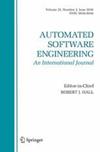The impact of feature selection and feature reduction techniques for code smell detection: A comprehensive empirical study
Abstract
Code smell detection using machine/deep learning methods aims to classify code instances as smelly or non-smelly based on extracted features. Accurate detection relies on optimizing feature sets by focusing on relevant features while discarding those that are redundant or irrelevant. However, prior studies on feature selection and reduction techniques for code smell detection have yielded inconsistent results, possibly due to limited exploration of available techniques. To address this gap, we comprehensively analyze 33 feature selection and 6 feature reduction techniques across seven classification models and six code smell datasets. And we apply the Scott-Knott effect size difference test for comparing performance and McNemar’s test for assessing prediction diversity. The results show that (1) Not all feature selection and reduction techniques significantly improve detection performance. (2) Feature extraction techniques generally perform worse than feature selection techniques. (3) Probabilistic significance is recommended as a “generic” feature selection technique due to its higher consistency in identifying smelly instances. (4) High-frequency features selected by the top feature selection techniques vary by dataset, highlighting their specific relevance for identifying the corresponding code smells. Based on these findings, we provide implications for further code smell detection research.


 求助内容:
求助内容: 应助结果提醒方式:
应助结果提醒方式:


